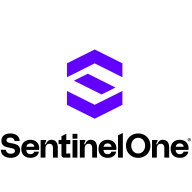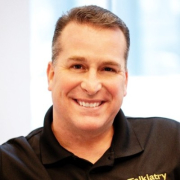

SentinelOne Singularity Complete and Cisco Secure Endpoint are two leading cybersecurity solutions. SentinelOne is favored for pricing and support, while Cisco stands out for its features.
Features: SentinelOne offers automated threat detection and response, rapid malware identification, and streamlined user interface. Cisco provides comprehensive threat intelligence, extensive integration capabilities, and advanced endpoint detection. Users value SentinelOne's ease of use and Cisco's integration options.
Room for Improvement: SentinelOne needs to enhance handling false positives, improve malware detection rates, and refine system performance under load. Cisco should improve performance metrics, streamline management options, and enhance user interface simplicity. Users see SentinelOne's improvements as more urgent.
Ease of Deployment and Customer Service: SentinelOne is praised for swift deployment, straightforward integration, and responsive customer service. Cisco users appreciate detailed documentation and support but find initial setup complex. SentinelOne's speed and support slightly outweigh Cisco's guidance quality.
Pricing and ROI: SentinelOne is seen as cost-effective with a solid ROI, appealing to budget-conscious buyers. Cisco, with a higher price, offers extensive features and integrations, providing substantial ROI. SentinelOne's pricing and ROI are attractive due to affordability, while Cisco’s higher investment is justified by its capabilities.
SentinelOne Singularity Complete has helped reduce my organization's mean time to detect by fifty percent.
Since then, I have not faced any intrusions, which is one reason I chose SentinelOne over ESET.
We have not faced any attacks since we implemented it.
Cisco has good technical support, especially considering these are newer solutions compared to traditional routing and switching products.
We are using the automated email process for support, and they respond within an hour or two hours sometimes.
A chat service would be beneficial.
The technical support from SentinelOne Singularity Complete is very active and good, with a strong knowledge base available online.
Cisco Secure Endpoint is definitely scalable.
It's all auto-scale and auto-categorized, configuring automatically.
SentinelOne Singularity Complete is very scalable.
My deployment is relatively small, and SentinelOne Singularity Complete works within those constraints.
We have not encountered any problems.
This indicates room for improvement in stability when interacting with other solutions.
Initially, there were issues, particularly on the management side, but now the console is much more stable.
Everything is managed automatically, so there is no user interference needed for upgrades.
The forensic capabilities need enhancement, especially for deep forensic data collection.
The only thing that prevented the attack from succeeding was a free version of Malwarebytes.
Providing a single pane of visibility for the end user would be beneficial.
That seems to play a little havoc and can conflict with manual installs, causing issues where it wants to delete and reinstall the client.
Cisco is aggressive in pricing, making it competitive and sometimes even cheaper than other good products like CrowdStrike, Microsoft Defender, or SentinelOne.
If you want protection, you have to pay the price.
There are other products that are less expensive, but I tell my clients that in security, they cannot cut corners or look for the cheapest solution.
Reputation and quality are important, but especially in today’s economy, price is a significant factor.
Cisco Secure Endpoint is very good in machine learning, which allows it to secure offline contents even if not connected to the internet.
I have an advanced app providing visibility of all my endpoints, which was not the case before.
SentinelOne has a feature to decommission automatically, which has been fantastic.
There's also automation that gives my team free time, preventing them from having to look for every alert.
| Product | Market Share (%) |
|---|---|
| SentinelOne Singularity Complete | 5.1% |
| Cisco Secure Endpoint | 1.4% |
| Other | 93.5% |


| Company Size | Count |
|---|---|
| Small Business | 21 |
| Midsize Enterprise | 14 |
| Large Enterprise | 21 |
| Company Size | Count |
|---|---|
| Small Business | 87 |
| Midsize Enterprise | 44 |
| Large Enterprise | 76 |
Cisco Secure Endpoint is a comprehensive endpoint security solution that natively includes open and extensible extended detection and response (XDR) and advanced endpoint detection and response (EDR) capabilities. Secure Endpoint offers relentless breach protection that enables you to be confident, be bold, and be fearless with one of the industry’s most trusted endpoint security solutions. It protects your hybrid workforce, helps you stay resilient, and secures what’s next with simple, comprehensive endpoint security powered by unique insights from 300,000 security customers and deep visibility from the networking leader.
Cisco Secure Endpoint was formerly known as Cisco AMP for Endpoints.
Reviews from Real Users
Cisco Secure Endpoint stands out among its competitors for a number of reasons. Two major ones are its ability to enable developers to easily secure their endpoints with one single operation using its management console and its advanced alerting techniques.
Tim C., an IT manager at Van Der Meer Consulting, writes, "The solution makes it possible to see a threat once and block it everywhere across all endpoints and the entire security platform. It has the ability to block right down to the file and application level across all devices based on policies, such as, blacklisting and whitelisting of software and applications. This is good. Its strength is the ability to identify threats very quickly, then lock them and the network down and block the threats across the organization and all devices, which is what you want. You don't want to be spending time working out how to block something. You want to block something very quickly, letting that flow through to all the devices and avoiding the same scenario on different operating systems."
Wouter H., a technical team lead network & security at Missing Piece BV, notes, "Any alert that we get is an actionable alert. Immediately, there is information that we can just click through, see the point in time, what happened, what caused it, and what automatic actions were taken. We can then choose to take any manual actions, if we want, or start our investigation. We're no longer looking at digging into information or wading through hundreds of incidents. There's a list which says where the status is assigned, e.g., under investigation or investigation finished. That is all in the console. It has taken away a lot of the administration, which we would normally be doing, and integrated it into the console for us."
SentinelOne Singularity Complete delivers advanced endpoint protection leveraging AI-driven threat detection and behavior analysis for efficient malware and ransomware response. Its standout features enhance security insights and ensure comprehensive endpoint management.
SentinelOne Singularity Complete provides robust ransomware recovery through unique rollback capabilities and seamless integration with various security solutions. Its machine learning enhances endpoint protection, minimizing false positives and automating responses. While praised for real-time threat monitoring, incident management, and asset management, it faces challenges in managing the console, customizing UI, and maintaining policy flexibility. Some users report difficulties with deployment and integration with existing systems, and enhanced reporting, alert management, and documentation are desired. Its appeal extends to deploying across multiple operating systems, offering comprehensive security coverage and facilitating cybersecurity compliance.
What standout features does SentinelOne Singularity Complete offer?Industries implement SentinelOne Singularity Complete for its AI capabilities in advanced endpoint protection, particularly against malware and ransomware. It's utilized across diverse operating systems, aiding in real-time threat monitoring and facilitating compliance. Organizations use it for vulnerability assessments and asset management, ensuring optimal protection in complex IT environments.
We monitor all Endpoint Detection and Response (EDR) reviews to prevent fraudulent reviews and keep review quality high. We do not post reviews by company employees or direct competitors. We validate each review for authenticity via cross-reference with LinkedIn, and personal follow-up with the reviewer when necessary.